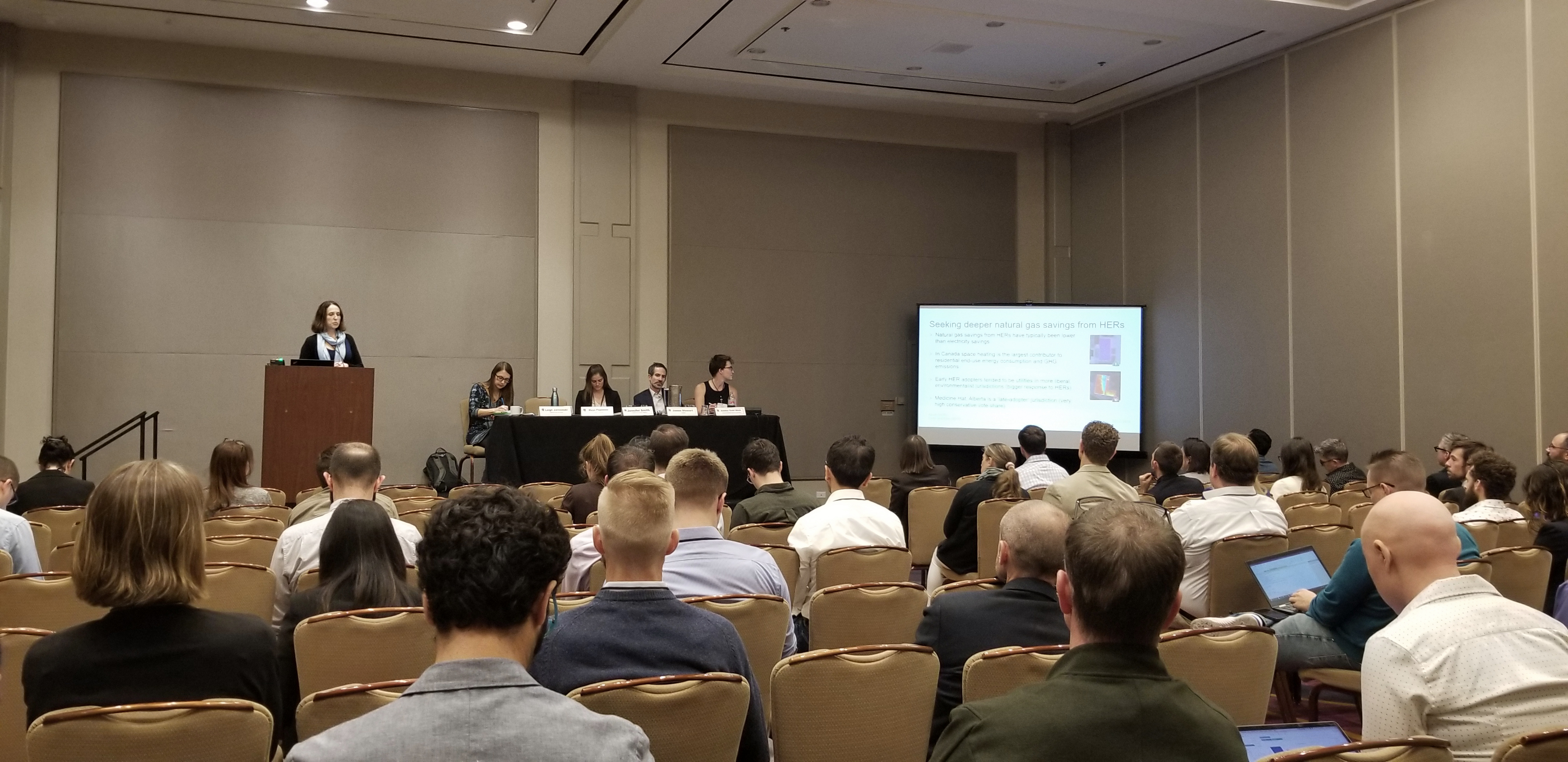An ounce of insight from top behavioural experts
The MyHEAT team journeyed to California this week to attend BECC, an international conference focused on understanding human behaviour and decision making and using that knowledge to accelerate the transition to a low-carbon future. It was an information-filled week and while we are by no means going to be able to touch on all of the valuable information picked up over the few short days, we wanted to share some insights from leaders in the field.
Why are they acting so irrationally?
From fraternity hazing to suicide bombing, humans don’t always act in a way that rationally makes sense. But how could a playground dare lead to a little girl eating a worm? It is our need to satisfy our core social motives that we need to belong in order to physically survive.
Dr. Cynthia Frantz of Oberlin College spoke to an audience about the fundamental motivators of human behaviour. The core social motives are belonging, understanding, control, esteem, and trust. She explained how individuals will do irrational, inconvenient, and even deadly things that are not in their economic or biological best interest for people, groups, values, and causes they care about.
When designing behavioural programs and transitioning society to a sustainable future, we need to understand what drives human behaviour and harness our need to meet our core social motives to have an impact on their decision-making process.
How do we address behaviours that are reinforced by current social norms?
Behaviours that fuel many current environmental crises are typically enjoyable and widely popular. For instance, eating meat at every meal is considered the standard way of life in the rural town where I grew up. Dr. Gregg Sparkman from Standford University addressed this topic and shared his work on fostering social change through dynamic norms.
The idea behind applying dynamic norms is that people can be nudged by information about the changes made by many people and trends in norms over time. Essentially, the growing majority is more influential than the static one. Dr. Sparkman found that when considered during the California drought in a study aimed at encouraging residents to save water by using fuller and fewer loads of laundry, dynamic norm messaging was three times more effective than static norm messaging.
One of the other powers behind dynamic norms is that they can motivate change without challenging an individual’s preconceived core beliefs. If you told me that 90% of residents in the town where I grew up were vegetarian, I wouldn’t feel that my understanding is being challenged with this (made up) fact. However, if the message was that 90% of residents in my town were starting to implement a vegetarian diet, it would be easier for me to digest without having it contradict what I thought to previously be true.
Customers respond to thermal imaging of their home in a way that traditional HERs simply cannot replicate.
While there seemed to be an endless stream of wonderful presentations, the MyHEAT team was the most excited to hear from Dr. Maya Papineau of Carleton University. She spoke about a project that MyHEAT worked hard to support over the last few years. We will be sharing more of the results in future posts, but wanted to highlight a few of the items that were shared at the conference.Â
Dr. Papineau started by sharing the motivation for using MyHEAT’s technology in the study. Previous studies suggested that homeowners respond to thermal imaging of their home in a way that traditional HERs simply cannot replicate. This sentiment held true in their examination.
Customers receiving heat loss data on utility bills saved more than double the energy than those receiving traditional HER information. Moreover, customers that were told their home ranked amongst the highest for heat loss reduced their gas consumption by over 5%. Compared to a control group, homes presented with their heat loss information submitted:
- 25% more applications to a local weatherization program; and,
- 17% more applications across all rebate programs.

The Voices of Today and Tomorrow
Finally, the conference ended with several great presentations from youth activists that have focused the world’s attention on the climate crisis. The key message was that they don’t want to simply be inspirational, hopeful, or worse, shut down (they discussed the generational response ‘OK, boomer’. to having their concerns dismissed). They want to be taken seriously and drive change.
And to me, they are. From leading climate strikes and rallying youth action around to the world to teaching a student-led university course, the group of empowering young women shared their individual stories of success. They are actively ingraining change across an entire generation that will soon be entering the workforce and building a global voice for action.
I don’t want you to be hopeful! I want you to act as you would in a crisis. I want you to act as if our house is on fire. Because it is.
– Greta Thunberg, World Economic Forum, Jan 2019
Written by:
Daygan Fowler, Energy Efficiency Program Manager



